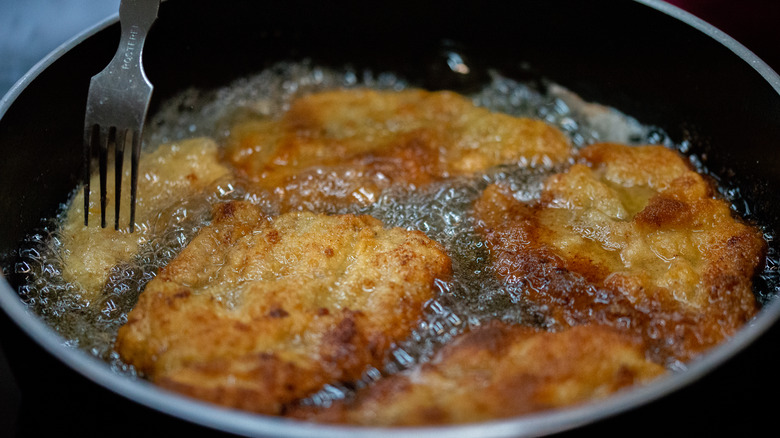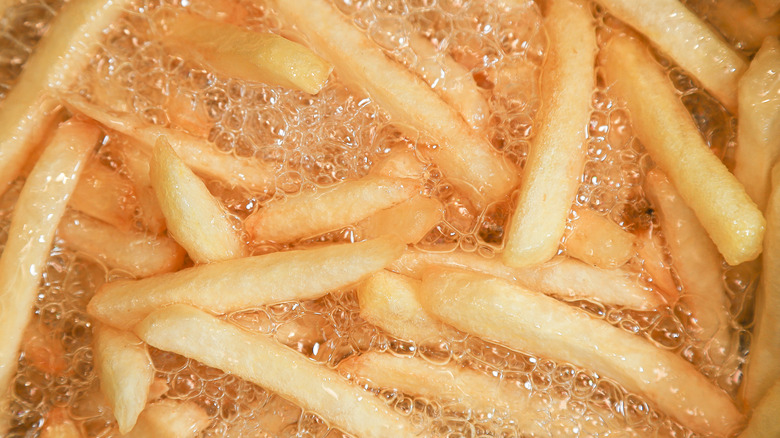Why You Should Pat Double-Fried Food Down After Cooking
Nobody likes greasy food, and it's an especially tricky balance when you're double-frying for that extra crunch. Luckily, there's a cost-free solution; always patting down freshly-fried items. Did you know that when food cools, it creates a suction effect that sucks the liquid on its surface inwards? That's thanks to the reliquidation of vaporized water inside, which tends to occur with a pop. With all fried dishes, this can result in deeply greasy results. And when you're double frying, it obviously runs the risk of accruing even more oil build-up. To avoid this issue entirely, be quick to dab away excess grease by patting it down with a paper towel or similar.
There are a couple of ways to do this, including pre-preparing a paper towel-lined baking tray to promote oil absorption or manually bundling up a sheet to blot items by hand. Considering how it's important to maintain oil temperature when double frying food, you might want to set up a baking tray to allow the oil to adequately reheat between frying sessions. Check out the individual dish requirements, too: The answer to how long French fries need to wait before you fry them twice could be different from chicken nuggets. It's a finely tuned process! And readily available blotting material will become your best friend for strategically timed pat-downs.
How does double frying actually work
There's not much a quick pat-down won't fix when removing excess grease. Additionally, putting wet items into boiling oil is one of the biggest mistakes everyone makes when frying food — learning this hack could save you from burns and guarantee more successful second frying. However, it's also worth learning how double frying actually works. In theory, this cooking process is all about dehydration. We know that it aims to create a crispy exterior, but what any type of frying actually does behind the scenes is eradicate moisture.
The true benefit of double frying is that it allows you to remove the water twice, the last time through pre-established escape routes. It also provides a lengthier evaporation time, losing more moisture from the dish. Usually, chefs split this into two stages: Blanching and finishing. The thoroughness of this approach elevates the crispy potential of the final results. So when you next crave crunchy fried food, it might be time to whack out this savvy double frying strategy.

